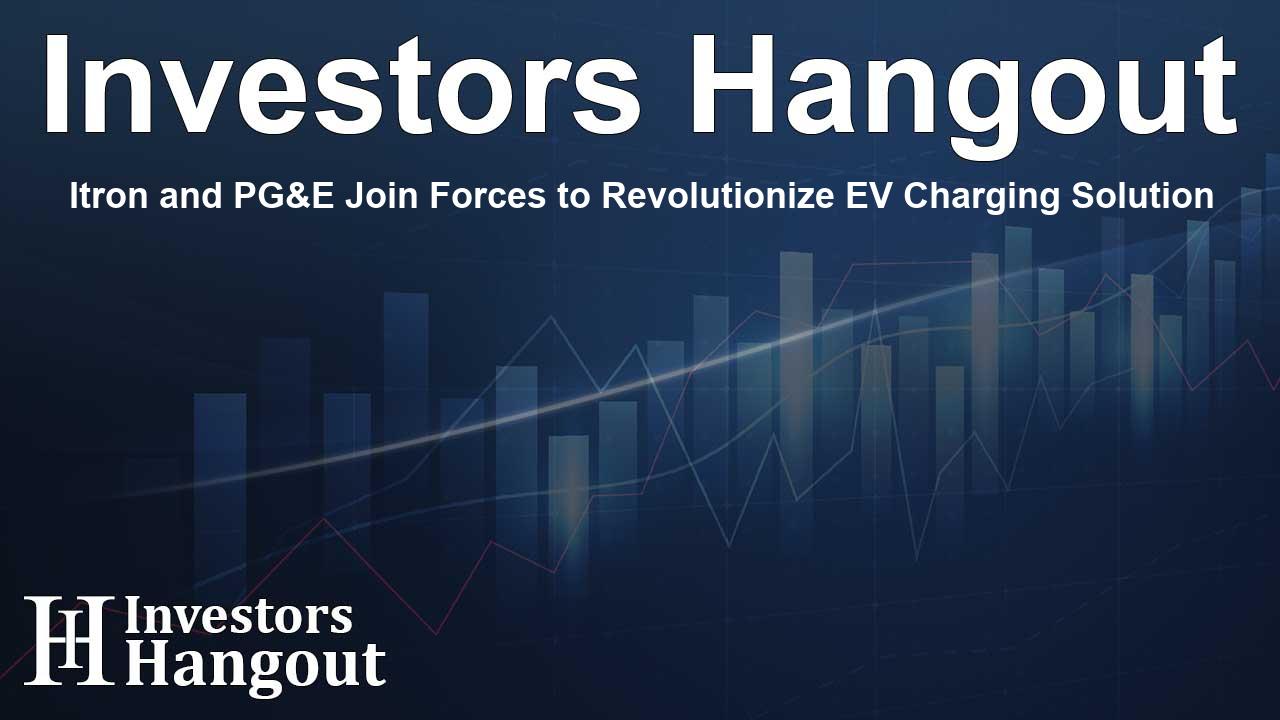Itron and PG&E Join Forces to Revolutionize EV Charging Solution

Innovative Collaboration Between Itron and PG&E
Itron, Inc. (NASDAQ: ITRI) and Pacific Gas and Electric Company (PG&E) are embarking on a groundbreaking partnership aimed at transforming the landscape of electric vehicle (EV) charging accessibility. The two companies are launching an initiative designed to alleviate the burdens that come with upgrading electric panel services for many customers, positioning themselves as leaders in advancing EV technology solutions.
The EV Connect Program Explained
The innovative EV Connect program stands at the forefront of this endeavor, making it significantly easier for customers to charge their electric vehicles at home. By focusing on customer-centric solutions, PG&E aims to pioneer the management of EV charging loads in real-time. This approach will help customers avoid expensive upgrades, enabling them to enjoy faster charging options without incurring hefty costs.
Challenges With Traditional Charging Methods
Traditionally, customers looking to install a Level 2 charger must have a service of at least 200 amps. Such chargers are crucial as they provide up to 15 times faster charging than standard wall outlets, allowing electric vehicle owners to benefit from a full charge overnight. However, about half of the homes in PG&E's service territory only have a 100-amp service, making upgrades not only a financial strain but also a logistical challenge.
How Distributed Intelligence Reinvents EV Charging
Unlike standard cloud-based solutions that only provide limited communication, the EV Connect program utilizes distributed intelligence (DI) to facilitate real-time interactions between the electric meter and the EV charger. This cutting-edge technology enables the coordination of electric charging processes, ensuring that energy consumption remains within the safe limits of the electrical panel and grid capabilities. Consequently, customers can sidestep the financial burden typically associated with hardware upgrades, ensuring smoother and faster charging experiences.
A Customer-Friendly Approach
The comprehensive nature of the EV Connect program is what truly sets it apart. By merging consumer engagement with advanced edge computing and industry-wide collaboration, this pilot program is designed to provide an affordable, secure, and effective solution to increase access to electric vehicle charging for all PG&E customers.
Looking Ahead: Pilot Program Launch
Initially, the EV Connect pilot program will assist up to 1,000 residential customers who have previously faced difficulties installing Level 2 chargers due to electrical service limitations. PG&E plans to upgrade their existing electric SmartMeters™ to the sophisticated Itron Riva meters, which will allow them to take advantage of the new charging capabilities available through this initiative. Early implementation of this pilot program is slated for 2025.
Future Implications of the EV Connect Program
Once operational feedback is fully assessed and the pilot program proves successful, PG&E is considering extending this initiative to a wider audience, making electric vehicle charging far more accessible to customers across their service area. This could represent a significant shift in how rural and urban customers alike manage the energy needs of their electric vehicles.
Demonstrations and Expectations
Itron is set to showcase the EV Connect application at a significant industry landmark event, the 2024 Innovation Summit, inviting stakeholders to witness firsthand the advancements that are reshaping energy consumption. This collaboration epitomizes Itron's commitment to harnessing grid-edge intelligence to empower consumers and utilities to sidestep costly upgrades.
About The Companies
Pacific Gas and Electric Company is a consistent leader in the utility sector, serving millions of individuals and driving forward sustainable energy solutions. Meanwhile, Itron continues to distinguish itself as a pioneer in intelligent infrastructure services, impacting energy, water management, and smart city initiatives positively.
Frequently Asked Questions
What is the EV Connect program?
The EV Connect program is a collaborative initiative between Itron and PG&E aimed at making electric vehicle charging more accessible and affordable for customers.
How does the program benefit customers?
Customers can avoid costly upgrades to their electrical panels while enjoying faster EV charging solutions, thanks to real-time load management and distributed intelligence technology.
Who can participate in the pilot program?
Up to 1,000 residential customers facing service limitations will be supported in this pilot program, enabling them to install Level 2 EV chargers.
When is the pilot program launching?
The pilot program is expected to launch in early 2025, with larger availability planned for the latter half of the year.
What technology is used in the EV Connect program?
The program employs distributed intelligence (DI) technology, allowing for real-time management of load and coordination between electric meters and EV chargers.
About The Author
Contact Lucas Young privately here. Or send an email with ATTN: Lucas Young as the subject to contact@investorshangout.com.
About Investors Hangout
Investors Hangout is a leading online stock forum for financial discussion and learning, offering a wide range of free tools and resources. It draws in traders of all levels, who exchange market knowledge, investigate trading tactics, and keep an eye on industry developments in real time. Featuring financial articles, stock message boards, quotes, charts, company profiles, and live news updates. Through cooperative learning and a wealth of informational resources, it helps users from novices creating their first portfolios to experts honing their techniques. Join Investors Hangout today: https://investorshangout.com/
The content of this article is based on factual, publicly available information and does not represent legal, financial, or investment advice. Investors Hangout does not offer financial advice, and the author is not a licensed financial advisor. Consult a qualified advisor before making any financial or investment decisions based on this article. This article should not be considered advice to purchase, sell, or hold any securities or other investments. If any of the material provided here is inaccurate, please contact us for corrections.
